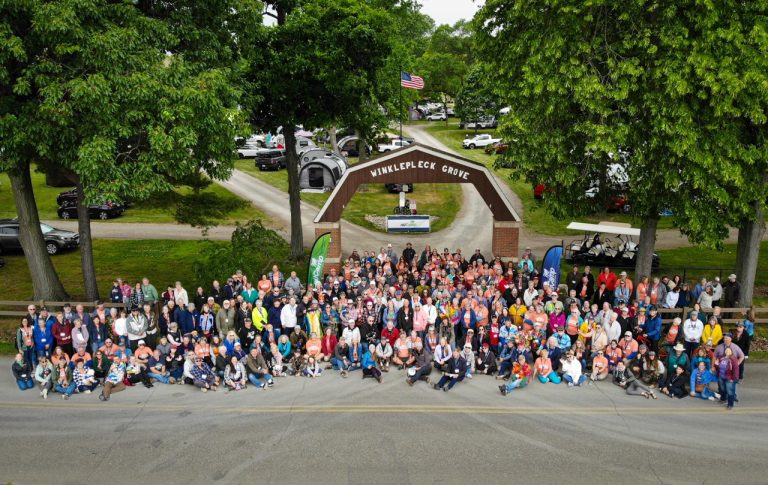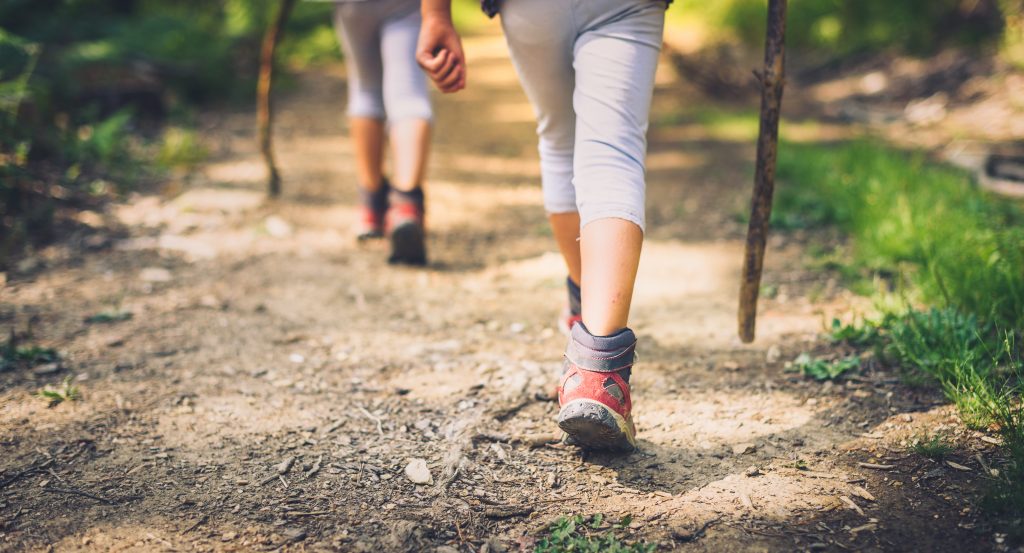The days are getting shorter and the weather is getting colder, but that doesn’t mean you can’t get outside and enjoy the beauty of late fall! There’s no better time to get outside and hit the trail than November 17, which has been designated National Take A Hike Day.
If it’s been a while since you’ve laced up those hiking boots or you’re a newbie hiker, it’s a good idea to undertake some preparations before you get out and get moving. Otherwise, your trail time could end with a need for first aid or, at the very least, serious TLC.
Here are tips from experts to help you make the most of Take A Hike Day or any day when you’re off the road and on the trail!
(Note: If you’re new to hiking, then keep it easy and short. The focus of Take A Hike Day is to have fun and enjoy a close-up look at your surroundings!)
Wear the right clothing and shoes
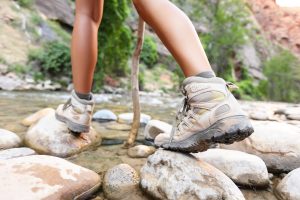
Generally speaking, you’ll want to dress in layers so you can add or subtract pieces as needed when the weather changes. Know what the forecast is and be aware that the higher the elevation, the cooler the temperature will be, meaning extra items may be needed. (Note: the elevation can also affect the duration of your hike, according to KOA. Figure that every 1,000 feet of elevation will add an hour to your hiking trip.)
Nix the jeans and go for long pants that are comfortable and breathable. (Note: skip shorts because they don’t provide protection from bugs and skin-irritating plants.) Add a lightweight poncho (in case of rain) or heavier outerwear if snow is expected.
When selecting your footwear, AmericanHiking.org recommends shopping in the afternoon or evening when your feet might be slightly swollen. Wear the same socks you’re using for the hike, and once you choose your hiking shoes, break them in before you go on your hike. Not sure what kind of shoes you need? This page has a breakdown of the different types.
Carry the right hiking gear and supplies
When it comes to packing your gear, bring what you need without overdoing it. Start with a backpack that feels comfortable, won’t put excess strain on your back and shoulders, and has a padded, adjustable hip belt, recommends KOA.
Then include these essentials from AmericanHiking.org:
- navigation tools (GPS and map or compass)
- drinking water (about 16 ounces for every hour of hiking) and food
- safety items (a knife or multi-purpose tool, USB power bank, firestarter, flashlight, and whistle)
- first aid kit
- sun and bug protection (sunscreen, sunglasses, and DEET insect repellent).
REI has a free printer-friendly Day Hiking Checklist available for download.
And because you may have to go while you’re on the go, pack toilet paper, hand sanitizer, waste bags, and any other necessities along with a zippered trash bag. (Leave No Trace has more info on this subject.)
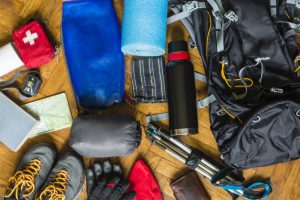
Know basic safety and first aid information
Think like a Boy Scout and be prepared. Know what to do in case of an injury and accident, and to help with that, download the Red Cross’s First Aid app for iOS and Android with step-by-step instructions for typical first aid scenarios. The app is fully integrated with 9-1-1 so you can call EMS from the app at any time, and the pre-loaded content provides instant access even without reception or internet connection.
Since weather can make or break the hiking experience, download a weather app to stay aware of what’s coming. Our post has a list of apps including several that are free.
Safety also starts with knowledge about your chosen hiking location. A little advanced research will tell you how challenging the trail may be, what kind of wildlife you may encounter, and other relevant information.
Finally, hike with a companion and make sure that you’ve shared the details of your trip with at least one other person (social media doesn’t count!), just in case you don’t return when expected. Adventure Smart’s Trip Plan app (free for iOS and Android and accessible from any web browser) allows you to create a trip plan (destination, travel route, equipment, and expected return time) and send it to your family and friends, who will receive push notifications when you’ve started out and returned.
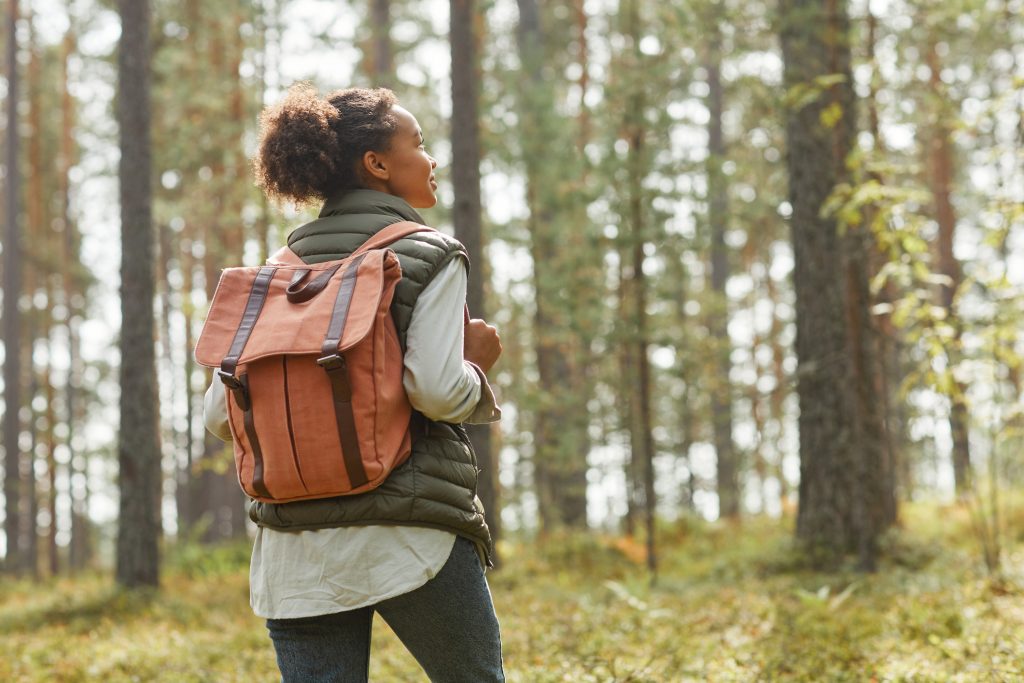
Do some stretches before and after you hit the trail
Stretching is critical to a successful hiking experience. Before your hike, it prepares your body for the exertion to come. After your hike, it helps your body get rid of the lactic acid that’s accumulated and reduces any muscle soreness. Here are some basic stretches to do, courtesy of Backroads.com and Trek Fest that focus on specific areas of the body: calf, quad, hamstring, hip flexor, back and upper body. Also, check out the NHS website’s five-minute basic warm-up video suitable for all levels.
Get more information
Looking for some trail suggestions for Take A Hike Day? Check out EarthTrekkers’s 20 Epic Day Hikes in The National Parks (USA).
Want to find a trail that’s close to where you’ll be? Go here for a crowd-sourced map from the American Hiking Society and the Hiking Project. There’s also a free app for iOS and Android listing 258,540 miles of hiking trails.
Or visit AllTrails for a searchable listing of 88,932 hiking trails, mountain biking routes, backpacking trips, and more.
Want a hiking app? Check out More Than Just Parks’ 20 BEST Hiking Apps in 2022.
Recent Articles



